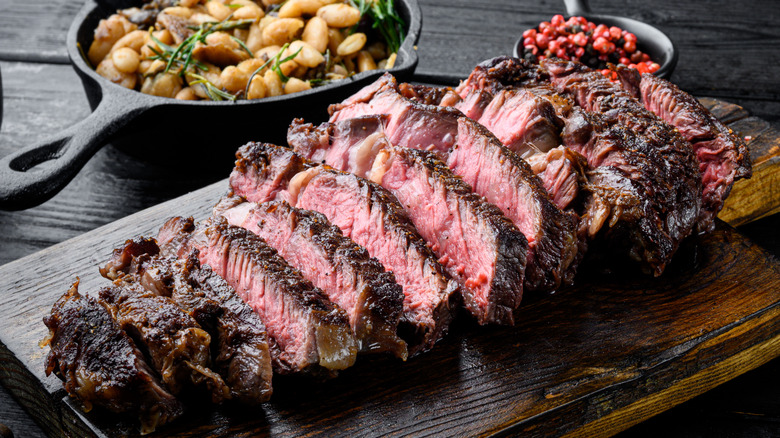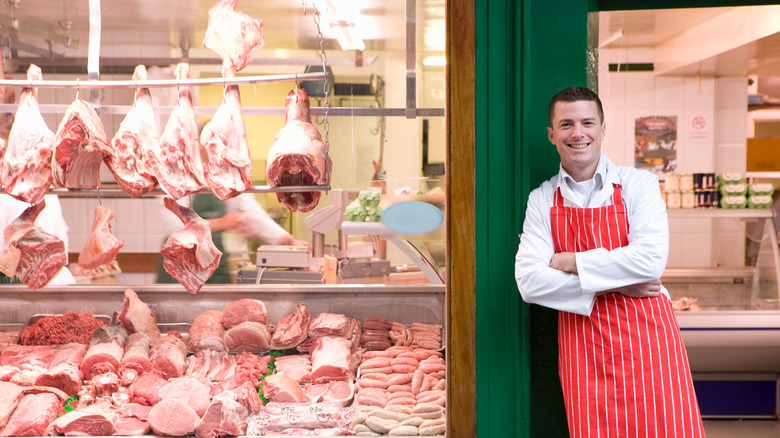What To Look For When Buying Prime Rib
What's a holiday meal without the main event being that tender, juicy prime rib of beef? For that matter, there are many types of special occasions that are judged by the presence (or absence) of this distinctive roast. Standing in line while the chef lovingly cuts a serving for all the guests at an important event is a quintessential dining experience, and the perfection of the meat — and how it was cooked — is a conversation that can dominate the rest of the meal. Exaggeration? Perhaps, but the prime rib's elite status for meat eaters cannot be overstated.
A cow, according Cook's Illustrated, has 13 ribs on a side with the first five contained in what is called the chuck section; the following bones encompass the rib section, with the last bone referred to as the loin section. Meat cut from the rib section can often be the most expensive cut of beef you can order in a restaurant or purchase in the butcher shop or grocery store. Being a careful shopper and learning about how to pick the best meat will ultimately result in making your roast the show-stopper it should be.
Pick the perfect prime rib
The grade of the meat, which is judged by its flavor, tenderness, and juiciness, is directly connected to its quality (per Bake It With Love). Even though prime rib is technically "prime grade," this grade is difficult to find and prohibitive in price, therefore choice or select grade are the next best alternatives. Choosing a rib roast with bright color and milky white fat evenly distributed throughout will get you the best piece (via The Spruce Eats). If you are not buying a full rib roast, which can be as large as seven bones, make sure you purchase the small end, which is closer to the loin section and more tender. Remember, though, that a benefit of buying the full rack is you can split it into several thick steaks for less money than if purchased separately (per I Am A Food Blog).
Natasha's Kitchen recommends picking bone-in prime rib "because the bone insulates the meat as it cooks and produces more flavorful and tender results." If buying a boneless prime rib, you could have the butcher remove the bones, tie them to the meat, and remove them after cooking to maintain its tenderness, says Natasha's Kitchen. The larger the roast, the better, because a smaller one could be ruined in minutes, so The Spruce Eats recommends you not pick one with less than three bones. Finally, it is worth buying meat that has aged, which increases the tenderness and gives it a more concentrated flavor.

